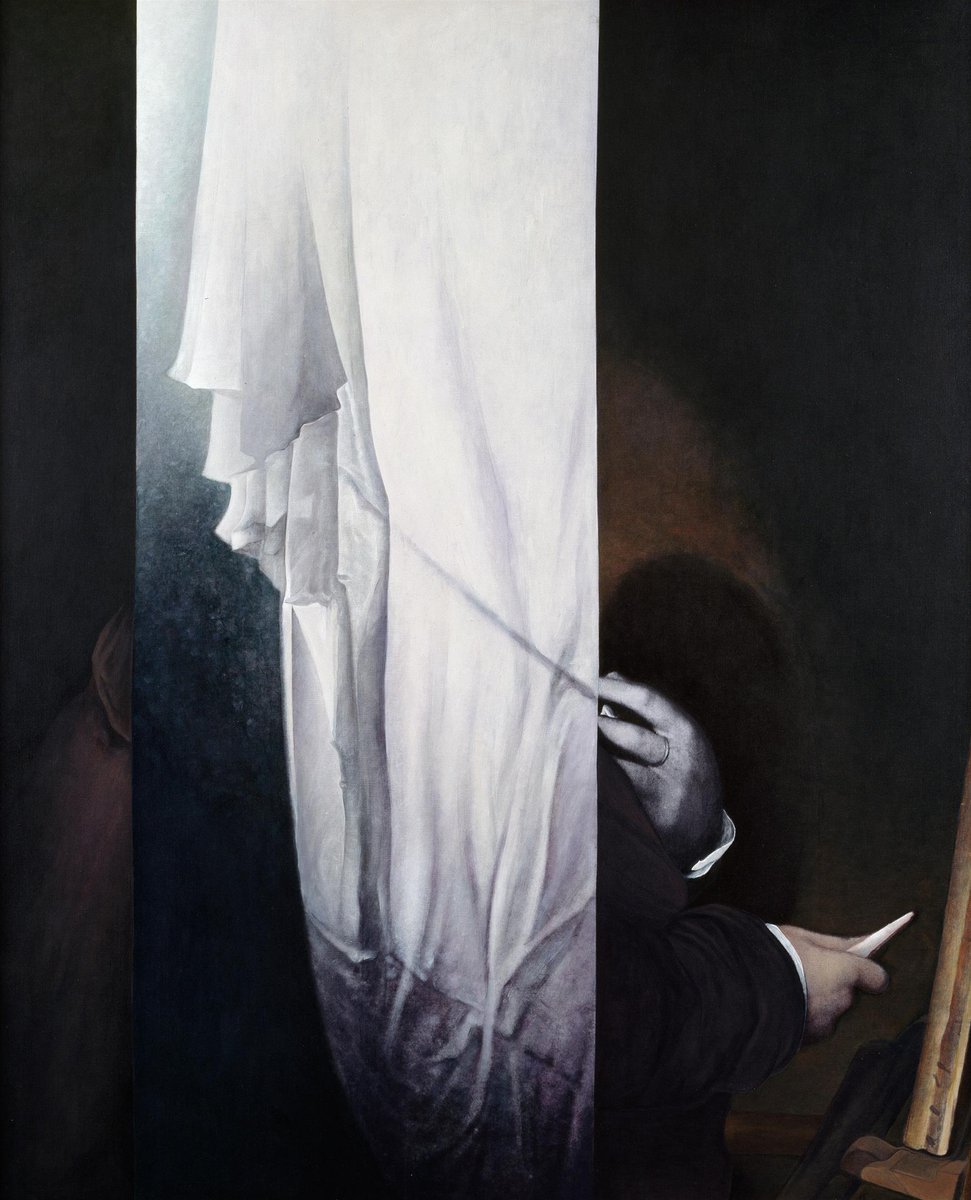The painting Mortecor, 1993, by Ricardo Cruz-Filipe is Collection Caixa Geral de Depósitos’ current highlight as it is on loan to the exhibition Cruz-Filipe. Modo de Ver / Way of Seeing curated by Ana Vasconcelos. The show is open at Fundação Calouste Gulbenkian, Lisbon, between 23 February and 15 April 2024.
Cruz-Filipe graduated in Civil Engineering from Instituto Superior Técnico, Lisbon, having taught there between 1958 and 1968. As of 1955 he dedicated himself to painting as a self-taught artist, having held his first solo exhibition at Galeria Pórtico, Lisbon, in 1957. In 1996, a retrospective exhibition entitled Forty Years of Painting was shown at Fundação Serralves. He was awarded the AICA Prize that same year, and the Banif – Pintura in 2003. João Pinharanda curated a solo exhibition by the artist at Centro de Arte Moderna Gulbenkian (CAM) in 2007.
His painting evolves along the lines of figurative art and by questioning the nature of real images. If, on the one hand, his research on technique – pictorial supports and surfaces – has expanded into the field of photography and reality replication, on the other, the scene is populated with silhouettes or fragments that form enigmatic displays and narratives of a surrealist and symbolic nature. As such, his works delve into the conceptual ambiguities of painting and how it comes across.
The painting Mortecor, 1993, is a good example of this dual aspect ever present in his work: technique and concept. ‘Morte-cor’, which translates into ‘dead colour’, is the first layer of pale colour applied to paintings. Cruz-Filipe reverses this technique by applying dark colours to the photograph, ambiguously revealing and hiding a human figure – a pair of hands emerging from a dark background that contrasts with the white fabric in the fore. This interferes with the rapport between photography and painting and brings drama into disturbing imaginings brought out by the image.
The following quotes highlight the relevance of Ricardo Cruz-Filipe's work: “Painting felt the need to find substitutes for its lost essence in those arts.” (Jorge Molder); “Tradition and change are present in Cruz-Filipe’s entire work by changing status between painting and photography and between unitary image and collage.” (João Lima Pinharanda); “The specific modern pictorial march obeys the fascination of the non-pictorial.” (Eduardo Lourenço); “The painter is the one whose unseen face emerges from the shroud that is the painting.” (Ana Hatherly); “An outlook on looking, an image of images – the image being the privileged place of absence.” (Bernardo Pinto de Almeida); “Cruz-Filipe created a never-ending continuity between photographic print and painting to bring composition and photomontage together and bring an ancient language back to everyday gestures.” (Pedro Lapa); “It is necessary to recognise the veiled eternity of ephemeral moments.” (Rui Mário Gonçalves); “On this instance, photography does not act as a discontinuous path, it is an integral part of renditions of plastic or narrative continuity.” (Fernando Pernes); “Acquiring in our times an awareness that to say everything does not mean saying everything.” (Fernando de Azevedo); “Everything thus becomes a place of wandering for the figures and cyphers of the world, or for brief absences, an application which is different from the arts of memory as well as from the riddle of everyday closeness we intend, or pretend, to have with them.” (Vasco Graça Moura); “Painting out of time? How come, given that it has the power to bring us back to the everlasting opaqueness and the temporal thickness of our journey?” (Eduardo Lourenço).
Hugo Dinis
104 x 84,5 cm
Inv. 275511


